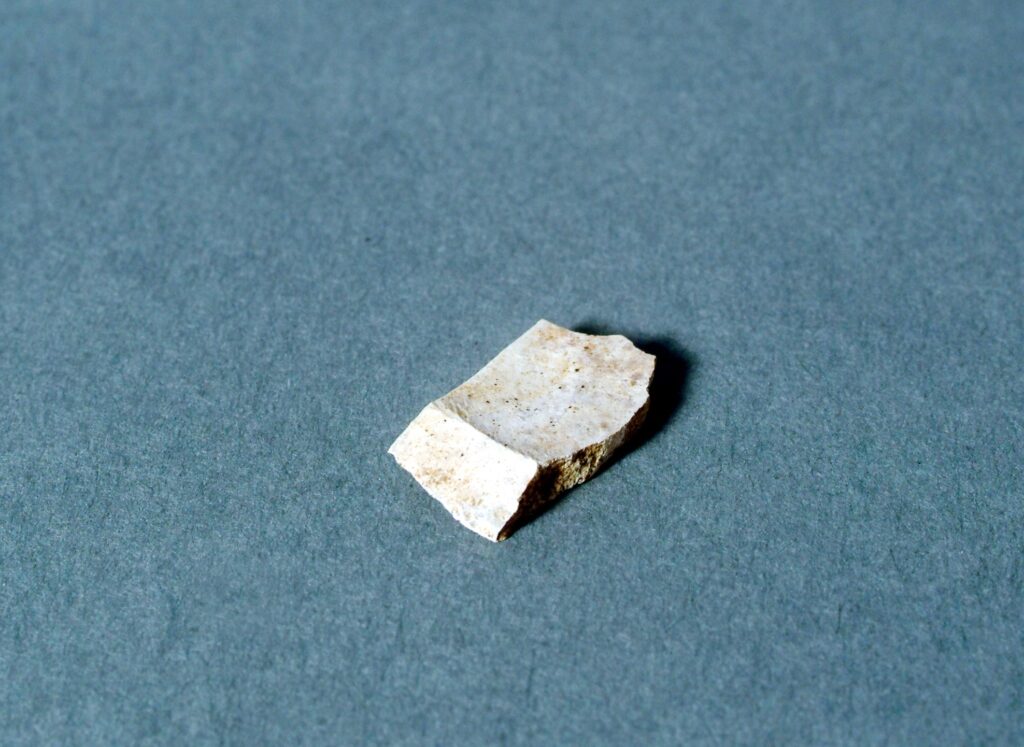Explore
Flint flake fragment
Flint flake fragment, patinated, tertiary,

Flint flake, patinated, tertiary, with striking platform, somewhat rectangular in shape
This item was found by chance along with 13 others by archaeologist Shane Delaney while walking in the Doolin area during the summer of 2000. All the items were surface finds and were found on disturbed ground. The disturbance was due to the removal of field walls and the subsequent mounding of the wall rubble into mounds.
The field system pattern in the area has been significantly altered since the turn of the century as evidence from the SMR map for the area (Sheet 8 and 8a). The field walls that have been removed are not marked on the revised 6 inch O.S. maps from 1913-1918, so they must be later.
The access road to the area is also a twentieth century structure, as it is not feature on the SMR. The area where the artefacts were found is marked as an archaeological comlex (SMR CL008-057). This encompasses a number of enclosures and a cashel and possible ancient field systems.
The soil of the area is formed on limestone bedrock and is characterised best by the karst landscape of the Burren. The topsoil depth is very shallow and the protruding limestone bedrock is a major feature of the topography. The depth of disturbed topsoil is no more than a couple of centimetres in general.
This flint flake fragment was found with 6 other artefacts together in the corner of a field that had been disturbed through the removal of a field wall.
They were concentrated in an area approximately 5m x 5m indicated on map (see Object History File).
Collection: National Monuments (Amendment) Act, 1994
Category: Tool/Implement